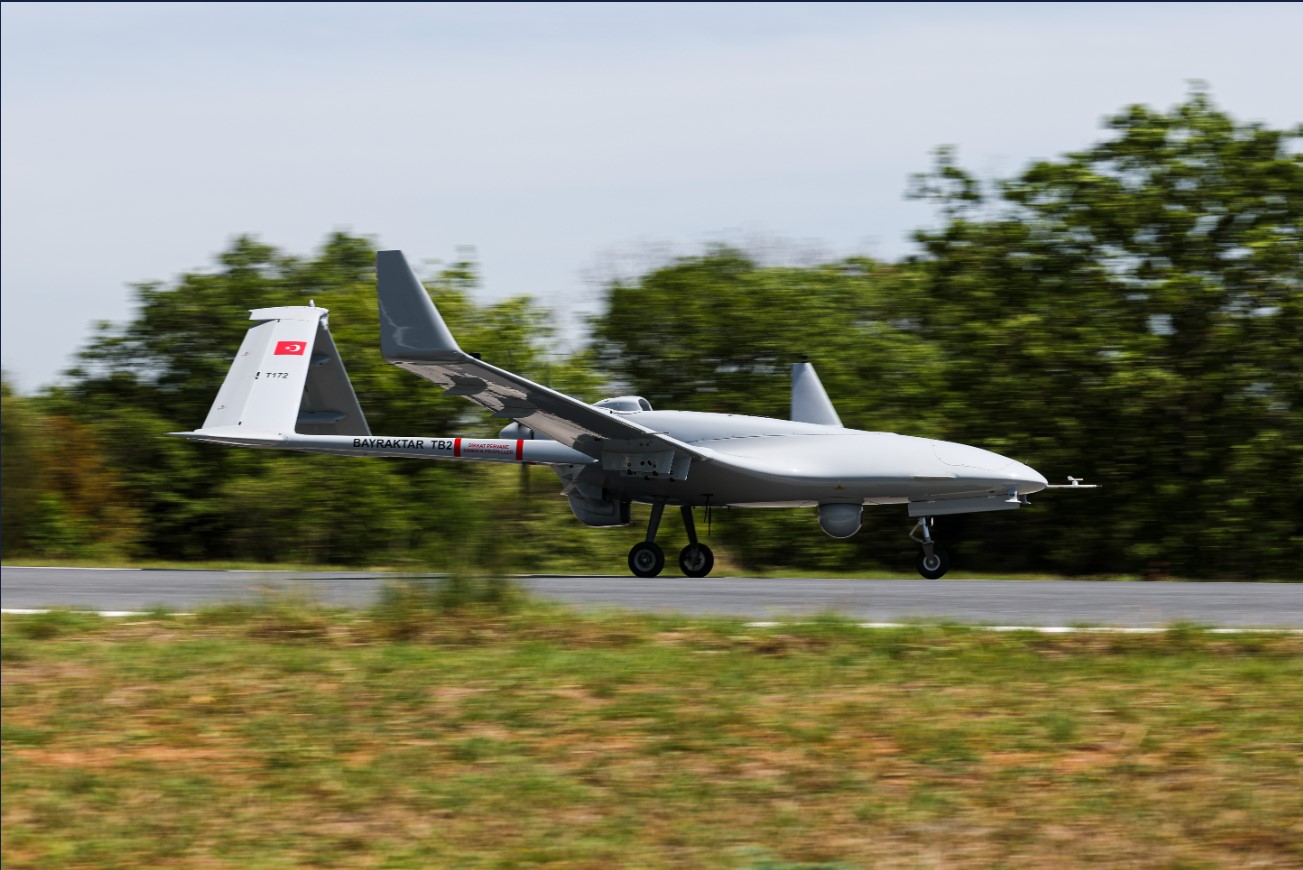A video that the Ukrainian navy posted online on Tuesday depicts a series of precision strikes on Russian troops traveling in boats along the Dnipro River in southern Ukraine. We know the video depicts the propeller-driven TB-2 because the Turkish-made drone features distinctive symbology on its control screen.
The TB-2 led Ukraine’s initial drone counterattack in the first weeks of Russia’s wider invasion in early 2022. But the big, expensive drone—it weighs nearly 700 kg and costs millions of dollars—eventually lost relevance.
TB-2s were big, fat, and hard-to-replace targets for Russian air defenses. Smaller, better, and cheaper drones—many of them made in Ukraine—soon displaced the survivors of the approximately 60 TB-2s Ukraine had received from Türkiye.
That some TB-2s are back in action over the Dnipro speaks to the insatiable demand for drones as Russia’s wider war grinds into its 40th month. But it also hints at gaps in Russia’s air defenses over the southern front. The TB-2s were vulnerable three years ago. They’re even more vulnerable now, but only when the Russians can deploy their best air defenses.
The Ukrainians have been degrading those air defenses, in part by targeting the radars and launchers with the same small drones that largely replaced the TB-2s in Ukrainian service. The new generation of drones has afforded the previous generation of drones another opportunity to fight for Ukraine.
The TB-2—a 6m-long, satellite-controlled drone with day-night optics and hardpoints for small, 8km-range missiles—was decisive in Ukraine’s defense of Kyiv in the spring of 2022.
After recovering from air and missile strikes that destroyed some of their 20 pre-war TB-2s on the ground on day one of the wider war on 24 February 2022, the Ukrainian air force and navy surged the drones into action.
The TB-2s opened an ever-widening robotic counteroffensive. By mid-March, analysts had confirmed nearly 60 tanks, air-defense vehicles, supply trucks, and even locomotives that had fallen prey to missile-armed TB-2s.
A sign of things to come
The Russians retreated through the fall of 2022, consolidated their hold on Ukraine’s easternmost and southernmost oblasts while rebuffing the Ukrainians’ 2023 counteroffensive in the south—and then counterattacked in 2024. But the pace of Russian advances dramatically slowed as 2024 turned into 2025 and the wider war entered its fourth year.
Ukraine’s drones are a main reason why. But the TB-2s no longer lead the aerial assault. The Russians shot down 26 of the Turkish-made drones in 2022 and 2023. Some of the survivors were still active as late as the fall of 2023, but they too soon faded from view.
Ukraine’s fast-growing defense industry replaced the few dozen multi-million-dollar TB-2s with literally millions of tiny first-person-view drones, each weighing just a few kilograms and costing a few hundred dollars. Controlled via radio or fiber-optic cable by a headset-wearing operator who sees what the drone sees, the warhead-clutching FPVs have utterly devastated the Russian war machine.
It’s hard to say how many of the roughly 17,500 armored vehicles that the Russians have lost since February 2022 were hit by drones. But it’s no exaggeration to say that, right now, Ukrainian FPVs are the main killers of Russian troops and wreckers of Russian vehicles.
Meanwhile, Ukraine’s helicopter-style bomber drones drop grenades, its fixed-wing surveillance drones patrol the front line and its long-range attack drones—also fixed-wing—range as far as 1,600 km inside Russia to strike air bases, command posts and factories. Even the best long-range attack drones cost less than a TB-2 does.
The TB-2s aren’t strictly necessary given the abundance of more affordable alternatives. That TB-2s are venturing back into what was once heavily contested air space points to the depletion of Russian air-defenses across swathes of southern Ukraine.
Drones, some launched by Ukraine’s fleet of unmanned surface vessels, have been relentlessly hunting Russian radars, surface-to-air missile batteries and air-defense vehicles in Crimea this year, recently striking S-300 and S-400 SAM batteries and Buk and Tor vehicles as well as several radars and jammers.
The TB-2s have rejoined the fight because they can—and because they still pack a punch, even as newer drones have left them far behind.





